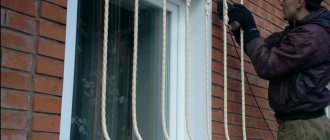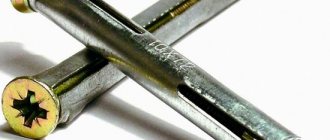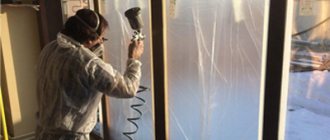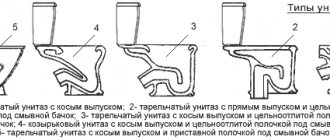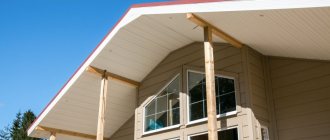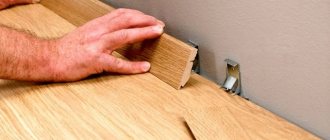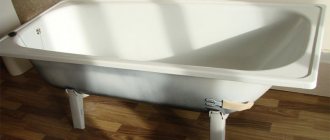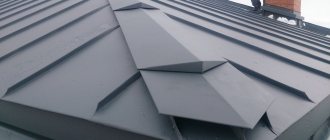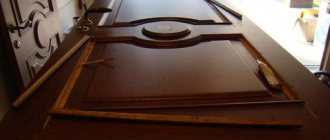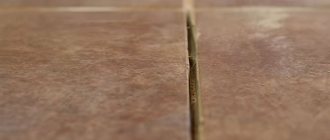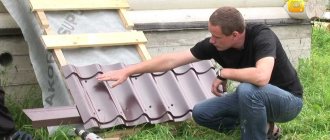Nowadays, plastic windows are no longer a symbol of prosperity and a mandatory attribute of European-quality renovation. The structures are installed everywhere in newly built buildings and private houses. They are even installed in older residential buildings to replace existing wooden window products. The popularity of such construction products is due to their affordable price, aesthetics, and good sound and heat insulation ability. This is especially true for noisy cities and regions with cold climates.
Specialized companies that are resellers or manufacturers of plastic windows offer clients not only the products themselves, but also their conditionally free installation. However, the installation cost is included in the price of the structures in advance. Other companies openly offer to carry out installation work for an additional fee, the amount of which is calculated depending on the area of the windows. The minimum cost of such a service is approximately 1200 rubles. per sq. meter.
If you install a plastic window, for which you do not need to have superpowers, there is a chance to save the family budget. But a positive result can be achieved only with a full understanding of all the intricacies of the installation process and the presence of minimal experience that allows you to use the simplest tool.
Self-installation of plastic windows eliminates an irresponsible approach to the manipulations being carried out. Many craftsmen are in a hurry to complete the maximum number of orders in one day. Therefore, they do not pay due attention to small details, do not comply with GOST requirements, do not be careful, and neglect some stages of installation. Others, so-called specialists, try to save money on consumables. This further prevents you from fully exploiting and enjoying the benefits of plastic window products.
Design features of plastic window systems
Polyvinyl chloride is used to make plastic windows. This material is abbreviated as PVC. The abbreviation is used in the name of plastic window systems.
In the production of PVC windows, a profile with a different number of air chambers is used. Their number affects the heat and sound insulation properties of the product. They are isolated spaces between the profile stiffeners. The number of chambers also affects the installation thickness of the profile system. The difference between the smallest and largest value of this size is only about 30 mm. Therefore, a plastic window, even with the widest profile, can be easily installed instead of an old wooden structure. The profile plastic system from well-known manufacturers in most cases has a minimum of 3 and a maximum of 6 air chambers.
All window profiles are additionally reinforced with a steel insert. Therefore, PVC structures are called metal-plastic products. Reinforcement is performed in the middle chamber. Reinforcing liners increase the rigidity of structures and are used as a basis for fastening elements when installing PVC products and fittings. During the manufacture of profile systems, U-shaped and closed steel inserts are used.
Manufacturers of PVC windows use economy, standard and premium profiles. It is recommended to give preference to the “golden mean”. Choosing a standard class profile will allow you to install high-quality window systems in a tilt-and-turn design. The economical option features thin internal partitions between the chambers. Because of this, profile systems can freeze at low temperatures. Premium products are more expensive for customers compared to other options and are often supplemented with various options.
Metal-plastic windows are manufactured mainly in white. If necessary, you can order designs in wood, black, brown or any other tone.
Before you start installing a plastic window, you need to get acquainted with its design:
- Frame is the supporting base of a metal-plastic window system.
- The sash is the opening and closing part of a PVC product.
- Double-glazed window - consists of at least two glasses. Adjacent elements form a sealed chamber with dry air or inert gas. Argon is often used to increase heat transfer resistance. The name of the double-glazed window depends on the number of chambers. Mainly one, two and three-chamber products are produced.
- Capercaillie - non-opening part of a metal-plastic window
- Distance frame - made of plastic or, more often, aluminum. The element is placed between the glasses and, together with butyl sealant, fastens adjacent translucent parts and ensures the tightness of the chamber.
- A bead is a small PVC strip used to secure a glass unit in the frame.
- Rubber seal to ensure the required degree of tightness of the metal-plastic structure when closed. This material is placed on the frame and sash.
- Fittings are mechanical elements of a plastic window system. They are used to hold, open and close the sash, including ventilation and even micro-ventilation. Such parts include handles, hinges, child locks, rotation locks, folding scissors.
- An impost is a strip in a vertical or horizontal plane that divides the window structure into separate parts. Tilt-and-turn sashes or wood grouse are inserted into them.
When installing a plastic window yourself, a metal drain must be installed. The part is fixed on the street side in the lower part of the polyvinyl chloride structure. The drain is designed to drain water that appears as a result of melting snow or rain.
Common mistakes when installing plastic windows
How to install a plastic window yourself in a wooden house without negative consequences - you need to familiarize yourself with the common mistakes of predecessors. The first among them is the incorrect taking of measurements. It is important to consider the space for the installation gap. During foaming, the base of the openings often turns out to be weak or dirty. Because of this, cold bridges and condensation form.
Neglect of the building level leads to premature failure of fittings and window frames. The use of cheap foam does not ensure durability and strength of the result. An installation gap wider than 40 mm increases the load on the fastening system. The best option is a distance of 15 mm.
Measuring the opening before purchasing a window
To install a plastic window with your own hands, you need to order and buy a PVC structure of suitable sizes. Therefore, it is necessary to take accurate measurements of the opening where the PVC product will be installed.
Important! Independent calculation of the dimensions of a metal-plastic window deprives the buyer of the manufacturer’s warranty of the polyvinyl chloride structure. The manufacturer provides it only when the measurements are carried out by a specialist from the company. Even a minor error when calculating the dimensions will not allow you to install a PVC window in the opening.
Before starting measurements, it is necessary to determine the type of opening. It can be flat, which has the same width on the inside and outside of the wall.
PVC window size drawing
There are also openings with a quarter. Their outer size is smaller. A quarter is an internal frame 6 cm wide. This corresponds to 1/4 of a brick. This protrusion prevents the window structure from falling out and allows for more reliable installation.
When ordering or purchasing a ready-made PVC window with a set of additional parts, you need to know its horizontal and vertical dimensions. You also need to have information regarding the length and width of the window sill and all slopes.
An accurate calculation of the dimensions of a PVC window for an opening with a quarter is accompanied by the following steps:
- the narrow part of the opening is measured in 3-4 places (width between quarters);
- 20-30 mm is added to the smallest result among all obtained values;
- the actual height of the opening is measured.
Important! To obtain accurate results, you must first remove the old slopes, plaster and window sill.
When determining the dimensions of a plastic window for a smooth opening, you need to subtract 3 cm from the width of the installation site, and 5 cm from the height. This is done to get approximately 1.5 cm gaps for the mounting foam on the left, right and top of the frame. Such actions also allow you to install a window sill from below, which requires about 3.5 cm of free space.
The width of the window sill is selected according to your preferences. Flowers in pots should be placed on it if necessary. It is recommended to add about 10 cm to the width of the inner part of the opening. The ideal option is when the window sill protrudes beyond the inner plane of the wall by a maximum of 6 cm. In this case, convection currents from the hot battery can easily penetrate to the plastic window and prevent fogging of the double-glazed window. The total length of the window sill should be approximately 10 cm longer than the window opening.
The width of the ebb is calculated in the same way as for the window sill. You only need to measure the outer part of the opening, and then add 10 cm per bend to the resulting value. Additionally, it is necessary to take into account the thickness of the insulation and finishing material in the presence of facade cladding.
The exact dimensions of the slopes are determined after installing the PVC window and window sill. Therefore, their sizes should be generous. The excess is cut off after the fact during installation work.
PVC window size drawing
Based on the results of all measurements, a drawing of the metal-plastic window system is drawn up. It indicates the dimensions of the frame and other structural elements, the location of the sashes and capcacaillie, the selected fittings, which, if necessary, will be helped by the employees of the PVC window manufacturer.
Note! When ordering and purchasing several polyvinyl chloride window structures for an apartment, the height of all products must be the same, but their width may differ.
Installing accessories on windows
At the final stage, a double-glazed window is installed in the window frame and the sashes are hung. Additional accessories are installed, additional fittings and components are attached, such as: step ventilator, clamp, mosquito net, blinds, etc.
The window is ready. Upon completion of all work, a work acceptance certificate is signed. In it, if necessary, the customer indicates his comments on the work performed, if any.
Almost immediately after all the work is completed, the PVC window can be used. The exception is windows with large opening sashes, which are not recommended to be opened within 24 hours after installing a PVC window.
In terms of functionality, a plastic window is much better than old wooden windows. If you follow simple instructions for its care and use, it will last you forever.
Removing the old window
This stage of installing a new vinyl window system is a dusty and messy process. Dismantling of the old structure, usually made of wood, is carried out after delivery of the purchased PVC product. The procedure must begin with the protection of furniture items. For this, polyethylene film is used. However, the best option is to remove all furniture from the room.
Dismantling work is carried out using:
- wood hacksaws or electric jigsaw;
- mounts;
- chisel and hammer or hammer drill.
The process begins with removing the window or first a small and then a large sash. Then the internal partition is sawn and removed from the frame. Next, the lower part of the remaining structure is dismantled. It is also sawn and removed from the premises. Do the same with other parts of the old window system. The window sill and drainage system are also subject to dismantling.
Thermal conductivity and sound insulation of the window: so that noise and cold do not sneak into the house
Thermal conductivity of plastic windows
In addition to the manufacturer, when choosing a window, it is also necessary to take into account such quality as the thermal conductivity of the structure. According to SNiPs and territorial building codes, the heat transfer resistance coefficient of a window varies depending on the climatic conditions of the region of residence. Structures that are installed in residential premises should not have a heat transfer resistance lower than that specified for the specific region of residence.
Thermal conductivity directly depends on the design and type of glass used in the double-glazed window. If you order windows with energy-saving glass, the thermal insulation of structures increases by 10-15%. The cost of energy-saving glass is about 250 rubles. for 1 sq. m.
The thermal conductivity of a window may decrease due to poor-quality installation, or less often due to manufacturing defects. Very often, in the process of improper installation, a chip or crack appears on a double-glazed window, and the structure loses one of its main qualities - tightness. Visually, this manifests itself as fogging of the inner surface of the glass. As a result, in winter the room will become colder, and the house will have to be heated more.
To improve the thermal conductivity parameters of the window, you can prepare a support profile. From the point of view of thermal conductivity, the stand profile is the weakest point in the window structure. To attach the drain, you will have to drill it, which will further worsen the thermal conductivity parameters. To normalize the thermal insulation properties of the window, the internal volume of the stand profile can be filled with polyurethane foam. This should be done the day before installing the window so that the foam completely hardens. Foaming of the stand profile is not provided for by GOST; window companies also do not practice this operation.
Soundproofing properties of plastic windows
This parameter is essential if there is a busy highway or railway near the house. However, it is always more pleasant if external noise from the street does not penetrate inside the house. And this cannot be achieved without high-quality window sound insulation.
Preparing a PVC window for installation
Installation of a plastic window begins with its preparation for installation. If the structure opens, then the doors are removed from the frame. When a blind polyvinyl chloride product is installed, the double-glazed windows are removed. These steps are not performed if the window system being installed is small in size, and installation is carried out using special plates. When preparing a PVC window, you must also remember to remove the protective film from the outside of the frame. You also need to screw in special elements for attaching the mosquito net and install decorative plugs on the oblong drain holes.
We remove the glazing bead from the grooves using a chisel or spatula
We take out the double-glazed window from the sash
Removing a glass unit from the blind part of the frame is done using a thin chisel or a strong spatula and a rubber mallet. The process itself is carried out as follows:
- the tool is carefully inserted into the gap between the frame and the bead;
- the polypropylene trim is bent from the window profile by lightly tapping it with a rubber mallet on a spatula or chisel;
- the tool gradually moves along the gap and is not removed from the gap until the bead is completely out of the groove.
Vertical thin PVC overlays are always removed first. Then the lower bead is removed. At the end of the process, the upper fixing element snaps off. It is recommended to number the parts so that each of them can be put in its place later. After removing all the beads, the frame tilts slightly. This will allow the glass unit to freely exit the polypropylene structure.
The sash is removed in the following sequence:
- the window handle turns to the closed position;
- plastic covers are removed from the hinges;
- the pin is pulled out from the upper loop by pressing on it from above with a hard object and grabbing the tip of this part that appears from below with pliers;
- the window handle is set to the open position, and the PVC structure with double-glazed windows is held by hand;
- the sash tilts slightly towards itself and rises.
Remove the plastic window hinge plug
We take out the rod of the upper hinge of the window
We remove the sash from the lower window awning.
As a result of removing the double-glazed windows from the blind parts and opening elements, only the frame with imposts remains. Therefore, the weight of the installed PVC structure is reduced. This facilitates the installation process and allows you to secure the window through through holes in the frame (installation using anchors).
Stages of installing plastic windows
The answer to how to properly install a plastic window is simple - initially the glazing activity should be carried out in free space. This is necessary in order to prevent damage to interior items and household appliances, and injury from discomfort and cramped conditions.
Workplace for a window installer Source s10.stc.all.kpcdn.net
You will also need space for a dismantled window, a new disassembled structure, tools and quiet movement. The work is accompanied by dust and debris, so it is better to cover the remaining things and furniture with film or a damp cloth.
It is recommended to cover the working areas under the window and along the walls with plywood, hardboard or chipboard. These materials will not allow damage to the floor covering from the pressure of heavy objects or falling window elements, tools, or stepladders.
Removing old windows
How to install plastic windows if there is already glazing, but it needs to be replaced - dismantle the old double-glazed windows and frames. The main thing is to prepare the site and follow the procedure. For work you will need gloves, a hacksaw, a crowbar, a knife and a screwdriver or screwdrivers.
Removing the glazing looks like this:
- Removing the sash. If the glass is poorly secured, it is better to remove it in advance.
- Cutting and removing the frame with impost. It is enough to make a few notches to simplify the task. For wood, you should use a regular saw, and for metal, you can take a grinder.
Removing an old window Source cdn1.spiegel.de
- Removing a window sill with low tide. The wooden one is dismantled by analogy with the same frame. The concrete is pierced with a jackhammer or a hammer drill with a spatula attachment; to simplify the work, cuts can be made with a grinder.
Methods of fastening a PVC window system
Before installing a plastic window, you need to decide on the method of fastening the structure. There are several popular options for fixing the profile system - using an anchor, plate or dowel. To choose the appropriate method, you need to know the features of each fastening method.
Anchor dowel
When installing a plastic window yourself is done in a panel or brick house, the walls of which do not have a layer of insulating material, any of the options for fixing the PVC structure can be used. Using an anchor is considered a reliable method. The sleeve of this fastener expands the sleeve when the screw is tightened. Therefore, the anchor dowel is securely fixed in the wall.
The disadvantage of using an anchor is the inability to dismantle it. Therefore, before starting work, it is necessary to carry out thorough preparation, including leveling the profile system. Otherwise, correcting errors will be very expensive.
To apply the anchor dowel, a through hole is created in the frame. This can lead to depressurization of the cameras in the profile. As a result, there will be a violation of the temperature balance inside the profile system.
The use of anchors requires certain professional skills from the work performer. If there is an error, gaps may appear or the fastening element will interfere with closing the sash. If all the work is done correctly, the window system will not sag and vibration will be eliminated even under strong wind loads.
Mounting plate
This fastening option must be used if the installation is carried out in a building with walls made of foam blocks, aerated concrete or reinforced concrete panels with insulating layers. After all, these are porous materials. The anchors will not hold securely in them.
Using plate elements is the simplest method of fixation, but it is not a 100% reliable method. However, it is used most often. It allows you to avoid depressurization of the profile system. The disadvantages of this method of fastening also include the possibility of the PVC window shaking. After all, the plates are fixed at one end to the profile with self-tapping screws, and are not twisted with it through through holes into a single structure. The other side of the fasteners is screwed to the wall using not an anchor, but a screw and a plastic dowel.
Nog
This type of fastener is an ordinary screw. It is used in the same way as an anchor. However, the dowel can always be unscrewed if necessary.
Installation of ebb tides
The ebb is inserted into the groove under the window, and then leveled, pressed, fastened with self-tapping screws to the stand profile and foamed.
After installing the plastic windows, the fittings are adjusted and a mosquito net is installed.
Well, now it's time to finish the article. All the material I wanted to share has been reviewed. I hope it will be useful to you, and you will use it if you need to replace your windows with plastic ones yourself. Improve your own practical skills and gain new knowledge, they say: “It’s never too late to learn!” That's all, thank you for your attention, successful and easy repair!
Mounting points for plastic windows
The first fastening must be done at a distance of at least 12 cm and maximum 18 cm from the corner of the profile system. The distance between subsequent places where the frame is fixed to the opening should be no more than 70 cm. This rule is clearly regulated by GOST. It applies to all window openings, regardless of the method of fastening the profile system, material and wall design. In this case, each vertical side of the frame must be fixed at least at three points, and the horizontal side must be fixed with at least two hardware. Determining the location of fasteners is influenced by the type of profile, color and size of the window.
If the house is built of concrete, bricks, cinder blocks or foam blocks, the window frame is installed from the inside of the wall at a distance of 2/3 of the opening thickness. When the wall structure is insulated with foam plastic, the profile system is fixed to the heat insulator. If the building is insulated and ennobled with bricks, the installation of a plastic window is carried out in the area of thermal insulation material.
Window sill installation
Installation of the window sill requires preliminary trimming of the excess length, since it comes with a margin in size. A jigsaw or grinder is perfect for these purposes. Then you should move the window sill to the support profile (if there is one) and level it.
Don't forget to put caps on the windowsill. It is advisable to cut the window sill so that it fits clearly into the opening along with the plugs. The best way to glue the plugs to the window sill is with super glue.
After leveling the window sill, you need to check it for subsidence by pressing with your hand in several places. If everything is fine, then you can start foaming, having first pressed down the window sill with heavy objects (for example, several bottles of water) to avoid bulging upward from the polyurethane foam. The next day, excess foam under the window sill can be removed with a regular knife.
By the way, you can install a window sill with a very slight slope from the window (literally 2-3 degrees), so that possible condensation does not leak between the window and the window sill.
Aligning a PVC window in the opening
Correct installation of a plastic window is possible only after careful horizontal and vertical alignment of the polyvinyl chloride structure at the installation site. The plumbness of the frame is checked in three planes. The work is performed using a plumb line, construction or laser level. The process cannot be carried out focusing on the edges of the window opening. After all, its side walls in old and even new houses are often not in the vertical and horizontal plane.
GOST states that vertical deviation of the frame is allowed. This value cannot exceed 3 mm per 1 m. However, along the entire length of the metal-plastic structure, the maximum deviation should be less than 4.5 mm. To level the profile system in the opening, mounting wedges made of polymer material or blocks of hard wood impregnated with antiseptic compounds are used. They are placed under the bottom profile and used on all other sides of the frame.
Installation of slopes
Before installing the slopes, you need to remove excess foam around the perimeter of the frame with a knife (this should be done very carefully so as not to damage the window material). To install slopes, PVC panels are taken and cut to the required length (two for the height of the opening, the third for the width of the opening). After vertical alignment, fastening is carried out using polyurethane foam.
And so that the foam does not push the panels away from the wall, they need to be glued to the walls with masking tape (preferably in three places).
After the foam has set, you need to make the final framing at the ends of the panels. For this, there is an F-shaped profile (thanks to this design, it is put on the end of the plank).
Installation instructions for a plastic window
Using the instructions on how to properly install a plastic window, you will be able to simplify the installation process, reduce the likelihood of errors and perform the work better. It is advisable to carry out all manipulations by at least two people. After ordering the exact dimensions, purchasing and delivering a PVC window, preparing the premises, dismantling the old PVC structure, removing opening sashes and double-glazed windows from the blind parts of the frame, work continues in a certain sequence.
Preparing the opening
Construction waste, including polyurethane foam, sealant and remaining fasteners, is removed from the cleared opening from the old window. The slopes are cleared of plaster, and the space under the window sill is cleared of the cement layer. If there are potholes and cracks larger than 2 mm on the surfaces of the opening, they are sealed with a solution of cement, sand and water or putty. Then you need to apply a penetrating primer. This is especially important if the walls are built from loose material.
Advice! It is recommended to use quick-drying mixtures of gypsum or polymers to eliminate defects instead of cement-sand mortar. This will reduce the overall installation time.
PVC window installation
The frame without sashes and double-glazed windows is brought into the prepared opening and installed on mounting blocks with control of the vertical and horizontal position. If bars are used, a layer of waterproofing material can be laid underneath them for additional protection of the wooden elements. Wedges should be used around the entire perimeter of the window. They facilitate the process of leveling the structure.
When installing a plastic window according to GOST, you also need to use a stand profile. The element increases the stability of the PVC structure, allows you to secure the drain and install a window sill.
When the frame is attached with anchors, through holes are made in the profile using a hammerless drill. Their diameter is usually from 8 to 10 mm. The hammer drill is used only for drilling walls made of dense material (reinforced concrete slab, brick, monolith).
Installation of the plastic frame is done by not fully tightening the bottom anchors. Then the top and only then the middle hardware are screwed in. At the same time, the verticality of the window system is constantly monitored.
Advice! It is not recommended to use great force when tightening the anchors. Otherwise, there is a possibility of deformation of the plastic frame.
After complete fixation of the frame structure, the pads from under the lower profile are not removed. They should remain at the edges of the frame and under the impost. Mounting blocks reduce the load on hardware.
Drainage installation
From the outside of the opening, the ebb is fixed by screwing self-tapping screws into the substitution profile. To prevent moisture from penetrating into the structure, a sealant is used. With its help, connecting places are sealed.
Important! Before installing the drainage system, do not forget to seal the bottom gap.
To reduce noise from rain, it is recommended to stick soundproofing material on the bottom of the drain. You can also use polyurethane foam. It creates a pillow under low tide.
Assembly and final fastening of the plastic window
After fixing the frame with anchors or plates, the removed sash is installed. To do this, the lower loop is put on the spindle. Then the parts of the upper similar fittings are combined and connected by a steel rotating shaft, which was previously removed.
The removed double-glazed window from wood grouse is inserted into place and secured with numbered glazing beads. When installing the plastic covers, you should hear a click. If the glazing beads are difficult to get into place, they can be tapped with a rubber mallet.
At the next stage, it is necessary to check the functionality and tightness of the sash. It should stay in place when open. If the sash does not move, the PVC window is level.
After checking, you can start foaming the seams. To improve the polymerization of the polyurethane foam, it is recommended to moisten the gaps with water. The seams should be filled to a maximum of 90%. Otherwise, deformation of the metal-plastic window will occur. If the work is done correctly, the foam will protrude out a little. Its dried excess is cut off with a construction knife. After this, you need to stick a vapor barrier tape around the perimeter of the plastic window.
Installation of window sill and slopes
The window sill is trimmed in accordance with the dimensions of the inside of the opening. The part to be installed must rest against the backing profile and extend at least 2 cm below the slope on each side.
Laying the window sill with a slope of approximately 60 towards the room is carried out using wooden wedges and using polyurethane foam. The window system element must be temporarily pressed with a heavy object.
Installing slopes allows you to refine the window opening by covering the installation seams. These decorative elements do not in any way affect the ability to retain heat and the tightness of the PVC structure if they were sealed according to the instructions and the correct installation of the drain and window sill was carried out. The installation of slopes can be carried out during the finishing of the entire room.
Stage 4. Dismantling work
This procedure is recommended to be carried out immediately before installing a new window. In most cases, the old ones are thrown away, so the structure can be torn out along with the fastening, and if necessary, the frame can be sawed.
Removing an old window
Window dismantling
Step 1. First, the seal and thermal insulation are removed.
Step 2. Next, the plaster is removed from the slopes. To do this, it is better to use a hammer drill with an appropriate attachment (it is called a “shovel”).
Step 3. The window sill is removed and the cement layer underneath is cleaned off.
Step 4. Adjacent surfaces are treated with a primer material (by the way, many installers forget about this). In the case of a wooden opening, a layer of waterproofing material is laid around the perimeter.
The window has been dismantled
Old window
Note! Installation can be carried out at a temperature not lower than -15ᵒC. Polyurethane foam must be frost-resistant.
Installation of windows with and without unpacking: sequence, features, advice from professionals
The installation of plastic windows is specific, so this work requires a special set of tools and materials, without which it is almost impossible to install windows correctly and accurately. If you can’t buy the things you need in a specialized store, you can contact a window company - the professionals will definitely find what you’re missing.
Below is a list that you can simply print out and take with you when you go shopping for tools and materials:
- plumb and level
- screwdriver and hammer drill
- drill with a set of drills
- gun and mounting foam;
- hacksaw or jigsaw
- small crowbar or pry bar
- silicone gun
- chisel or knife with a wide blade
- mounting wedges
- tape measure and pencil
- roll moisture-proofing material
- sheets of iron (galvanized) and metal scissors (needed for making drains yourself)
The main stages of installing PVC windows:
- dismantling the previous structure and window sill;
- preparing a new window for installation;
- marking the frame for subsequent fastening;
- fixing fasteners to the frame;
- making holes for fasteners;
- leveling the plastic structure;
- securing the structure in the opening;
- installation of low tide (can be done at the end of the process);
- intermediate adjustment of fittings;
- foaming the cavities between the window opening and the frame;
- window sill installation;
- final adjustment of fittings.
Each stage of installing a plastic window should be considered separately.
Dismantling old window structures
- When dismantling a window without sashes, simply remove the glazing beads and then remove the glass. If the windows are opening, then the sashes are removed from the hinges. If it is impossible to do this, remove the sashes along with the glass. However, if the windows are very old and rickety, then it is necessary to remove the glass.
- We saw through the old frame in several sections. This is done with a hand saw or grinder (just take a circle on concrete, other circles jam or break, which is quite dangerous). After sawing, the old frame can be easily removed using a crowbar, hammer drill and other tools. A wooden frame in good condition can be left. Inspect the condition of the block, remove damaged, rotten areas, treat the frame surfaces with fire and bioprotective compounds. However, experience shows that wall material is better for installation: the size of the window increases, a reliable fastening is obtained and there is completely no risk of the frame rotting in the future. The only exception is when the windows are intended for wooden buildings. Then the windows cannot be placed directly into the wall of the house, otherwise they will be damaged when the building shrinks (details here - Installing plastic windows in a wooden house with your own hands).
- We dismantle the wooden window sill in the same way as the frame: saw through it and remove it in parts, helping ourselves with improvised tools. You will need to tinker with the concrete window sill: it is not so easy to break it. Use a jackhammer or grinder. There is no need to break a good window sill, you can leave it. But a plastic window sill is still warmer. In addition, when leaving a window sill, be prepared for the fact that there will be a gap between it and the window frame. It needs to be sealed with a mixture that is thrown over the “skeleton” of mesh. In this case, cracks almost always appear. To avoid this, you can lay tiles at the top of the window sill.
- Cleaning the window opening from dirt, debris and dust.
Preliminary stage: preparing the window for installation
Windows with movable sashes are mounted closed. When installing a window open, there is a risk of deformation of the structure (the foam that will fill the gap between the opening and the frame can bend the frame). After foaming, the window is left for 12 hours, during which it cannot be opened. And to avoid accidental opening of the sash, you can postpone the installation of the handle until the installation of the window is completed.
It is not recommended to remove the tape that covers the surface of the window to protect it from damage until the installation of the structure and finishing of the slopes are completed.
PVC window installation sequence
Marking on the frame for fastening points
We retreat 5-15 centimeters from the corner of the frame and mark a place for the outermost fixing element. The frame needs to be fastened on 4 sides, the fasteners are located every 70-100 cm. If a stand profile is used, the frame is not fastened from below.
Fixing the fastener to the frame
Fastening elements include self-tapping screws, anchor plates, and U-shaped hangers for drywall.
Anchor plates and hangers have the same price - $0.05 (wholesale), $0.15 (retail). However, anchor plates are thicker than hangers. When purchasing, give preference to products made from thicker metal.
The fastener must be tightly secured in the metal frame frame. In order for the element to secure well, the screws must be used for metal. Such products have a drill at the end and a diameter of 4 mm. You can also use simple self-tapping screws, only in this case you need to first mark the holes in the frame with a drill.
Applying recesses for fasteners
We place the frame with the fasteners attached to it in the window opening, then knock out recesses in the opening in the appropriate places (depth 2 - 4 cm, width similar to the size of the fasteners). The fasteners will later sink into these recesses. By completing this procedure, we will make it easier for ourselves to finish the slopes.
Tip: when installing a window without a mounting strip, you should place blocks of wood or other dense material under it so that it rises to the height of the window sill. Then it will be possible to attach the window sill not to the window frame, but under it. If there is a mounting plate, the frame will automatically rise to the desired height. Typically, the mounting strip is already fixed to the frame and does not require additional fixation.
Leveling the window structure
This stage is the longest in the entire window installation procedure. However, by aligning the window in the vertical and horizontal planes, we automatically give it the correct rectangular shape. To level the structure, you need wooden wedges or bars that are placed under the frame. The first pair of lower wedges is set, then you can immediately fix the window from above with an anchor plate. Next we place two wedges at the top, then on the left and right at the bottom and top of the window. If there is an impost, you also need to put a wedge under it. During these actions, it is important to ensure that the vertical posts do not deviate to another plane. It is convenient to level the window with two people, when one supports the structure, the second inserts wedges.
Attaching the window to the opening
Having achieved a perfectly level position of the window, i.e. Having set it correctly in level, we can proceed to fastening the structure. To do this, use dowels (diameter 6-8 mm, length 75-80 mm) or anchors (diameter 6-8 mm). The latter have a higher cost, but provide more reliable fixation. They are recommended to be used if the wall consists of shell rock, brick or foam concrete. Fastening on anchor plates is used if the block structure contains a thermal insert and the frame in the mounting plane cannot be mechanically secured. A dowel driven into concrete can withstand a load of up to 60 kg, which is quite enough to fix a window. For wooden walls, you can use screws with a diameter of eight millimeters.
Advice: do not immediately tighten the screws on the sides of the frame completely, leave 1 cm until they stop. There is no need to screw in the construction screws in the upper part of the structure yet. The frame will not go anywhere, and you will have the opportunity to check the uniformity of the gaps on the sides and, if necessary, move the frame in one direction or another. After the final fastening, this will be more difficult. If the uniformity of the gaps is satisfactory, the horizontal/vertical structure is maintained, you can completely fix the frame by screwing in the screws on top and tightening the remaining screws on the sides. After this, it is worth checking the horizontal and vertical structure again.
Fastening the ebb of a plastic window
Installation of ebb tides can be done at the very end. You can buy the ebb ready-made or make it yourself. It is best to secure this element under the window - this will prevent the penetration of water where it connects to the frame. Upon completion of the installation of the drain, the space between it and the profile is filled with foam. If it is not possible to attach the ebb under the frame, it is fixed directly to it, for which 9 mm metal screws are used.
Intermediate adjustment of fittings
It is necessary to tighten or loosen the window hinges so that the sash moves silently and freely when opening and closing. An open sash should not slam shut on its own. Correctly adjusted hinges will allow it to remain in the desired position.
When moving, does the sash “strike” where the locking hardware is installed? Move this element a little lower or higher.
Foaming the gaps between the opening and the frame
It is important to fill the gaps so that there are no voids left. Large cracks (more than two centimeters) are foamed in several stages, with a break between them of two hours. With this approach, there is no danger that the foam will deform the window as it expands. In addition, the consumption of polyurethane foam is saved, there is no excess that has to be cut off, and the quality of the assembly seam improves.
Since the foam hardens under the influence of atmospheric moisture, a lack of humidity in the room can lead to poor-quality polymerization. To avoid this, you need to lightly spray the area between the window opening and the frame with water before foaming, and after filling the cavity, spray the surface of the foam itself with water. If the air temperature during installation does not exceed five degrees, then winter or all-season foam is used. In warmer weather, you can use summer foam.
After polymerization of the foam, it is necessary to protect it from exposure to ultraviolet radiation. This stage can be combined with finishing the slope. But if you don’t want to make slopes yet, or plan to do it later, then the foam needs to be covered immediately, since it quickly collapses due to exposure to direct sunlight. In this case, we prepare a cement-sand mortar at the rate of 1 part cement and 2 parts sand, or dilute tile adhesive and cover the foam with any of these materials. In addition, you can purchase PSUL tape (vapor-permeable self-expanding sealing tape) at a hardware store and cover the polyurethane foam with it. However, the cost of the tape is quite high (from $3 per linear meter), so the first options are used more often.
Window sill installation
1. Trimming. The window sills have a standard length and width and have a good margin, both in length and width. Before installation, the window sill is cut using a jigsaw, grinder or saw with small teeth.
2. Leveling. We move the window sill to the support profile and level it using wooden blocks or other available materials.
We cover the side sections of the window sill with end caps. It is better to glue the plugs to the ends with super glue.
By lightly pressing the window sill with your hand, we make sure that it does not sag. In some cases, the window sill is not installed level, but at a slight angle (no more than 3 degrees) “from the window.” Thanks to this slope, possible condensation does not flow under the window.
We foam the cavity under the window sill.
After foaming, place something heavy on the surface of the windowsill (you can use plastic water bottles or books for this purpose) and leave it like that for 0.5 days.
If you do not press down the window sill with a load, it will bend upward under the influence of foam.
3. One day is enough for the foam to completely harden. After which its remains, sticking out unsightly from the crack under the window sill, need to be cut off using a utility knife.
4. If the window sill was initially uneven, then during installation there may be a gap left between its upper part and the frame. It is carefully filled with silicone. It is worth considering that this material has low biostability and can turn black from fungus. A gap will not appear if galvanized iron plates in the shape of the letter “Z” are fastened to the window sill profile in advance (before installation). In addition to the fact that these plates will allow you to grind the window sill tightly, they will simplify the task of leveling it.
Final window adjustment
At this stage, you can remove the protective tape from the window structure and finally screw on the handle. If finishing the slopes is postponed, do not remove the tape until all finishing work is completed.
In what ways is it possible?
There are two common ways to install a PVC frame without a stand profile and with a stand.
Without stand profile
In the first option, a number of through holes for anchors are drilled in the frame for fastening in the opening, using a 10 mm drill with the direction of the holes perpendicular to the profile.
I place such holes along the profile axis, with a gap of 180 mm to the inner corner, and 150 mm at the point where the impost is attached.
The drilling direction is maintained from the outer wall to the inner one, this will help create holes of the correct shape.
Sometimes there is no reinforcing liner in the frame profile in the drilling area. When drilling from inside the room, this defect will not be identified, but if on the contrary, then the absence of the liner can be detected.
In this case, you need to make a new hole in the frame, moving 40 mm. These measures are necessary to avoid installing the anchor without a liner, otherwise it will fall inside the chamber.
For standard two- and three-hung windows, fastening is carried out with 11 anchors. In this case, you need to pay attention to the drill; it must be pre-sharpened in order to drill through the internal reinforcing liner.
Advantages of installing metal-plastic windows without a support profile:
- faster installation;
- low installation cost.
Disadvantages of installing a frame without a support profile:
- the ebb is attached to the frame, which creates conditions for moisture to enter the room;
- the tightness of the installation is broken, the wall will freeze;
- the fastening of the window sill is broken;
- The thermal density of the window is disrupted.
With stand profile
When installing a PVC frame, a special profile is attached to the lower end - a stand; after installation, this element cannot be seen, but it fulfills the very important energy-efficient characteristics of the window. In addition, a slope is attached to it from the outside, and a window sill from the inside.
The stand profile is placed in a specially designated groove at the bottom of the frame and secured in it with self-tapping screws and special clamps.
Advantages of a wildcard profile:
- provides thermal protection of the seam together with construction foam;
- increases the service life of the PVC block;
- strengthens the structure of the installed frame;
- protects the opening from moisture and biological damage by mold.
Oddly enough, many experts believe that when installing PVC windows this element is not required, since the main heat and moisture protection is provided by foam. The disadvantages of installing a PVC window using a substitution profile include:
- high cost of installation work;
- extended installation time.
Methods for installing PVC windows: to unpack or not to unpack – that is the question!
When installing windows, you need to choose the type of installation - with unpacking (unpacking) or without unpacking. Want to understand how these two methods differ from each other? Take a look at the diagram of a plastic window.
- The frame is one of the main elements of a window. The frame is formed from a reinforced PVC profile and several sealed chambers. The number of cameras can vary from two or more.
- A double-glazed window is the largest element of a window, occupying about 80% of its area. It is a sealed structure consisting of glass. Depending on the number of glasses and air gaps between them, it can be single-chamber, double-chamber, etc. The double-glazed window fits tightly to the frame due to the seal.
- Glazing beads are parts that allow you to mechanically secure a glass unit to the frame.
- An impost is a separator through which a window is divided into several sashes. There are single-leaf, double-leaf, three-leaf, etc. designs.
- A blind sash is a sash without an opening mechanism.
- A transom is an opening sash.
- Sill (other names: bottom, mounting, stand) profile is a load-bearing element of a window structure. It is necessary for the correct installation and fastening of a plastic window sill and external drain indoors.
- Fittings are all moving parts of the structure designed to open, close, and secure the transom when ventilating the room.
Window installation method with unpacking
(in some regions the term “unpacking” is used, the essence is the same). This method is based on preliminary disassembly of the structure: glazing beads and double-glazed windows. After fixing the frame to the wall throughly, all removed elements are installed again.
To quickly and correctly unpack the structure, you need a strong knife or chisel. We insert a knife blade or chisel between the glazing bead and the frame, and with gentle blows on the handle, knock the glazing bead out of the groove until a gap appears. Then we bend the knife (chisel) and push the elements apart with the wide side. We consistently do this with all the glazing beads that hold the glass unit in the sash. It is not recommended to do this procedure with the sharp end of a knife, since it increases the risk of damaging the window or glazing bead. To remove the glass unit, be sure to wear gloves, otherwise you will injure your hands on the sharp corners of the structure. If the window is not solid and there are sashes, remove them. If there is a transom in one of the sashes, it is easier to remove the entire assembly without removing the glass unit. That's it, the structure is ready for installation.
Disadvantages of the method
: more labor-intensive, takes longer than installation without unpacking (on average, 30-60 minutes are added for each window). Often, fogging of the glass unit occurs in a window installed using this method. In addition, the appearance of the glazing beads may be damaged (scratches, chips) if they are removed/installed carelessly. It is important to perform all actions clearly and carefully. After removing the packages, you need to put them in a safe place where there is no chance of accidentally touching them and breaking them.
Advantages and scope of application of the method
: installation of windows with unpacking is more reliable and provides a strong fixation of the frame to the wall. This method should be chosen in the following cases:
— it is planned to fasten windows in multi-story buildings (from the 15th floor). When installing windows on the lower floors, where there is no wind and gusts of wind, they do not need to be unpacked;
— installation of structures of considerable size is to be done. However, in this case, combined installation is allowed (the balcony block is attached without unpacking).
Window installation method without unpacking
This method does not require disassembling the structure. That is, there is no need to remove double-glazed windows and glazing beads. The frame is secured to the wall not with dowels, but with fasteners pre-installed on the outside of the wall.
Advantages and scope of application of the method:
Installing windows without unpacking saves time, shortening the process as much as possible. This method is recommended for use where there is no need for increased fastening strength: when replacing standard windows in private houses, and also, as mentioned earlier, in multi-storey buildings below the 15th floor.
How to install correctly: choosing an installation method
There are two different methods: with and without unpacking (disassembling) the window. When unpacking, holes are drilled through the frame and anchors are driven through them into the wall. This method is more complicated, but the fastening is more reliable.
This is an anchor bolt installation. There are three of them on each side.
When installing without unpacking, metal plates are attached to the outside of the frame, and then they are attached to the walls. This is naturally faster, but the fastening is very unreliable: under significant wind loads, the frame will warp or it will sag.
This is the fastener most often used by installers. In my opinion, they look unconvincing
If you really don’t want to disassemble the window, you can mount it on a plate, but use not narrow and thin ones, but thick and wide ones, which are often used when installing a rafter system.
In principle, small windows installed on mounting plates, provided there are no significant wind loads, can stand normally. If you live in a region with strong winds, and they blow mainly through your windows, if the apartment is located in a high-rise building, in these cases installation with unpacking is necessary.
Below, watch an emotional and intelligible video that explains why it is better to use anchors.
Installation of a mosquito net is described in this article.
How long does it take to work?
Installation of PVC windows can take from 2 to 10 hours. The duration of installation work directly depends on the following factors :
material of wall structures, work is completed faster in panel houses, where the window opening is initially made more carefully;- level of premises preparation;
- level of preparation of the window unit;
- number of floors and distance from the waste site;
- time for delivery of the window and accepted consumables.
The preparation of the workplace is carried out by the customer; the more thoroughly it is carried out, the faster the installers will work.
If all conditions are met to the greatest extent, then the main operations for installing a PVC window will take :
- dismantling the old unit - from 25 to 60 minutes;
- window opening preparation - 30 minutes;
- installation at the level of the window frame - 30 minutes;
- installation of sashes and fittings - 15 min;
- window sill insertion - 10 min;
- installation of ebb tides - 15 minutes;
- installation of slopes with panels - 30 min;
- compaction - 15 min;
- total from 2 hours 50 minutes to 3 hours 25 minutes.

